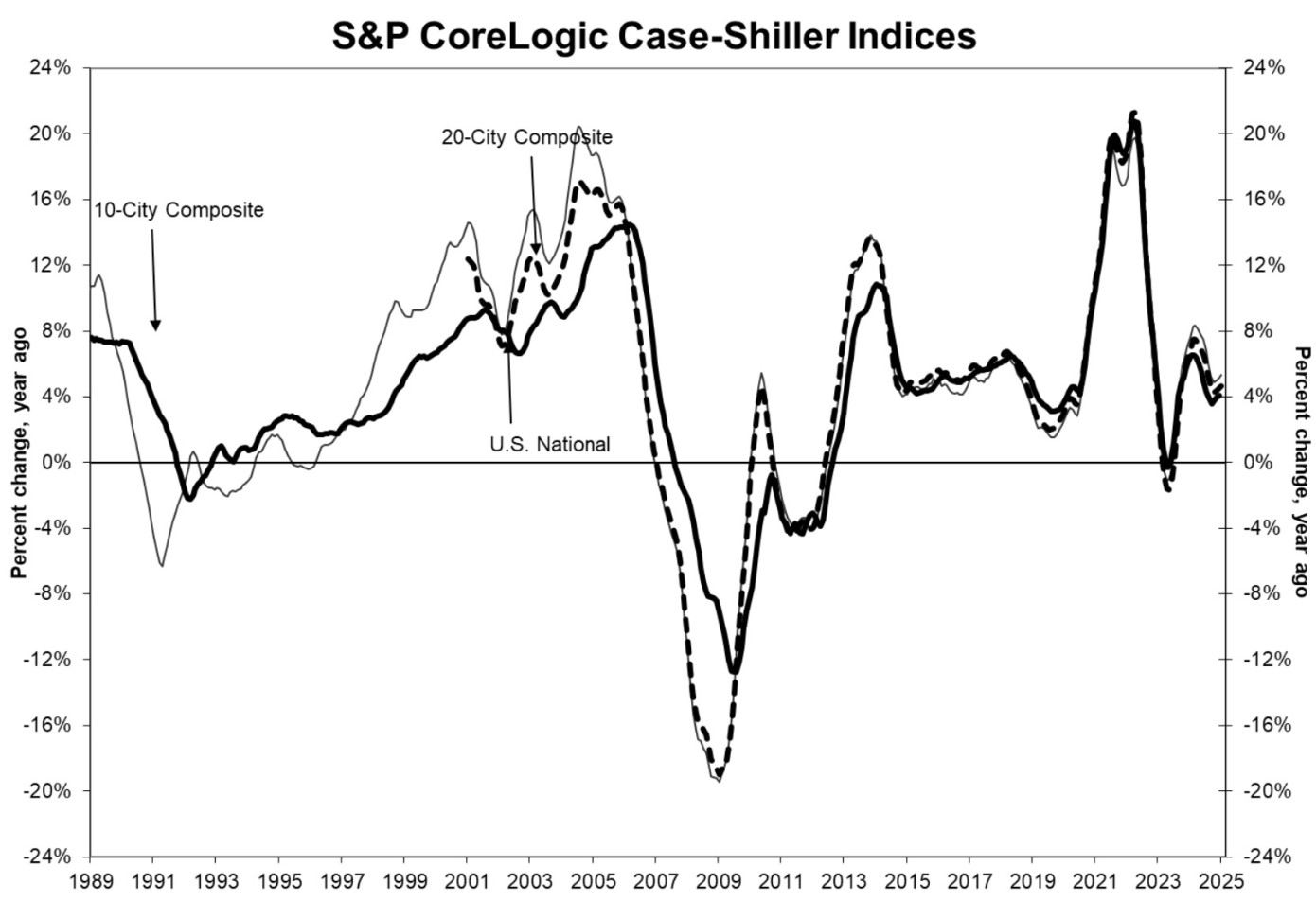U.S. home prices increased 4.1% year-over-year in January 2025, according to the S&P CoreLogic Case-Shiller Index. This marks a slight increase from December 2024's 4% annual gain. The 10-City Composite rose 5.3%, while the 20-City Composite increased 4.7%, both reflecting marginal improvements from their respective previous readings. Among the major metro areas, New York recorded the highest annual gain at 7.7%, followed by Chicago at 7.5% and Boston at 6.6%. Tampa posted the largest decline, with home prices falling 1.5% over the same period.
Month-over-month data showed more modest growth. The U.S. National Index increased 0.1% in January before seasonal adjustment and 0.6% after seasonal adjustment. The 10-City Composite rose 0.2% and the 20-City Composite gained 0.1% before seasonal adjustment; both indices increased 0.5% after seasonal adjustment. Image: S&P CoreLogic Case-Shiller Index
Notably, New York, Chicago, and Boston led in growth over the past year, while Tampa experienced the steepest decline. San Francisco recorded a 3.4% decrease over the second half of 2024, the largest six-month drop, while Tampa followed closely with a 3.2% decrease. Only four cities — New York, Chicago, Phoenix, and Boston — managed to post price increases during this period.
In January 2025, regional performance varied. Los Angeles reported a 4% annual increase, while Miami grew 3.3%. In contrast, Dallas (1.3%) and Denver (1.9%) posted some of the lowest annual gains. Tampa's 1.5% decline stood out as the only negative result among the 20 markets tracked.
Rising mortgage rates and affordability concerns influenced home price trends, particularly in the latter half of the year. Source: S&P Dow Jones Indices and CoreLogic.
